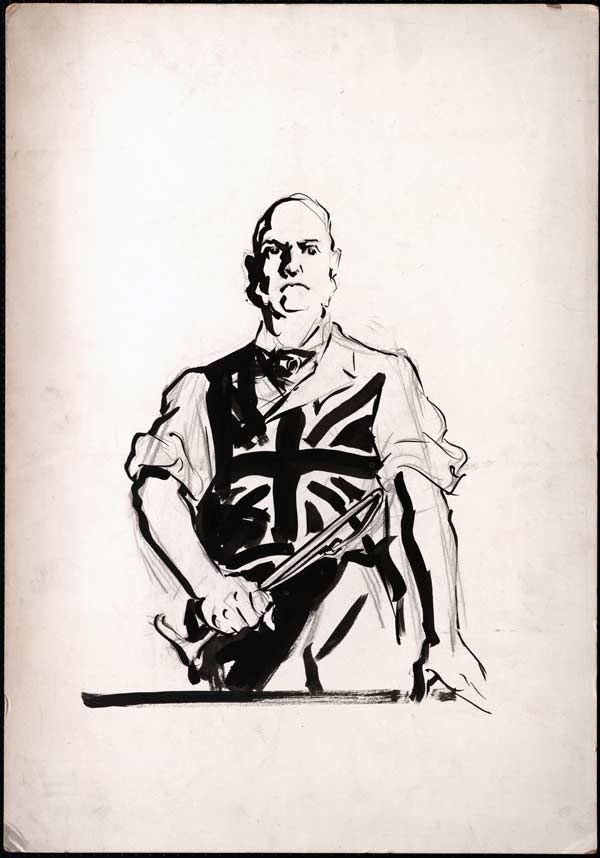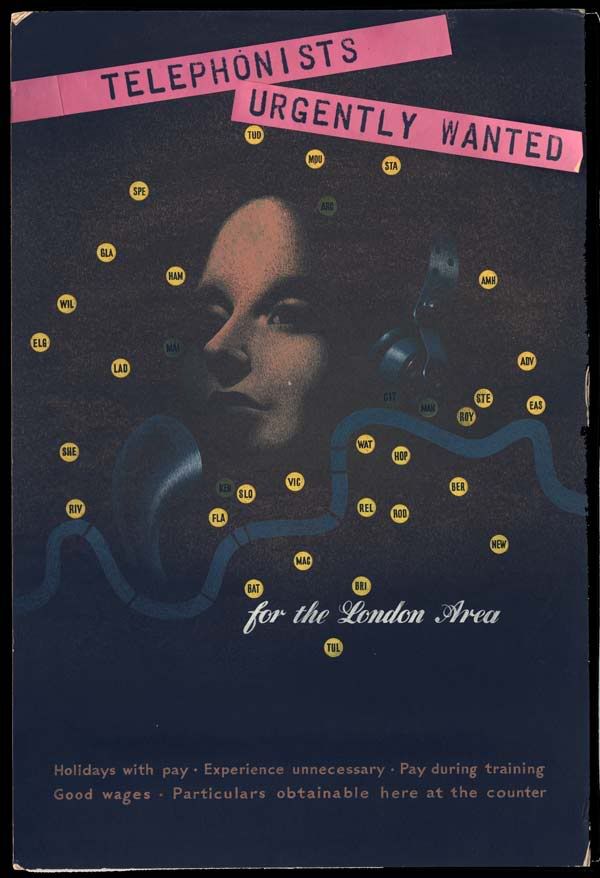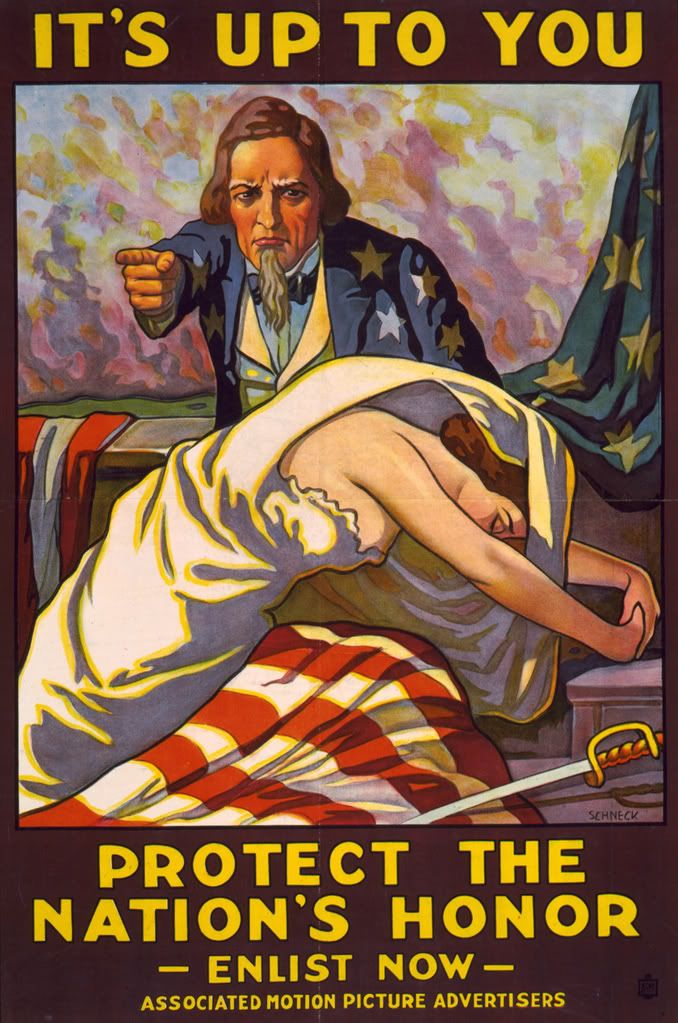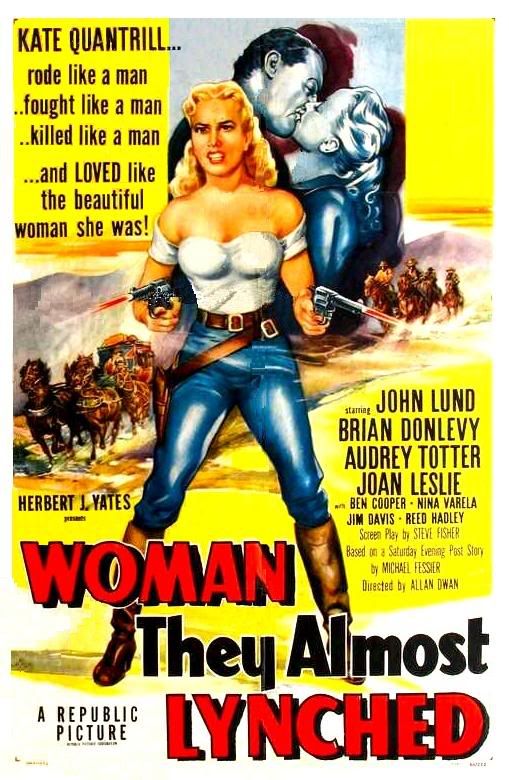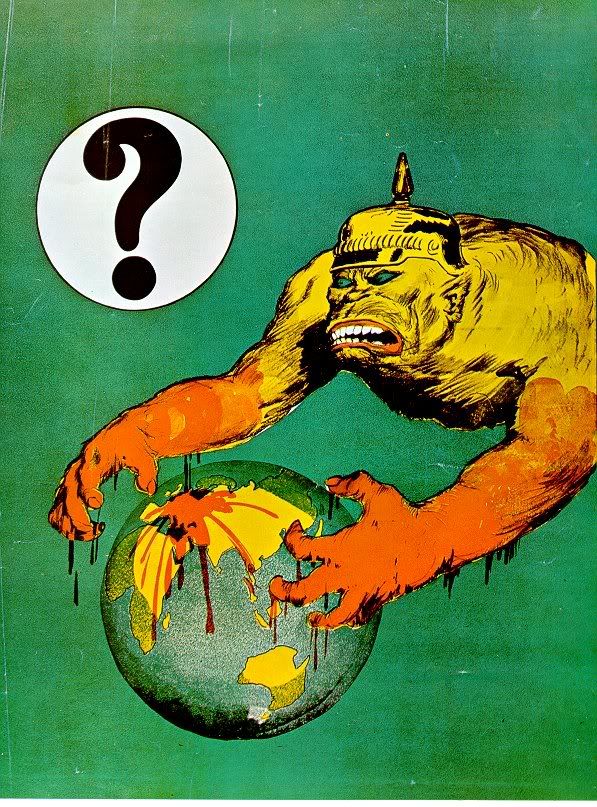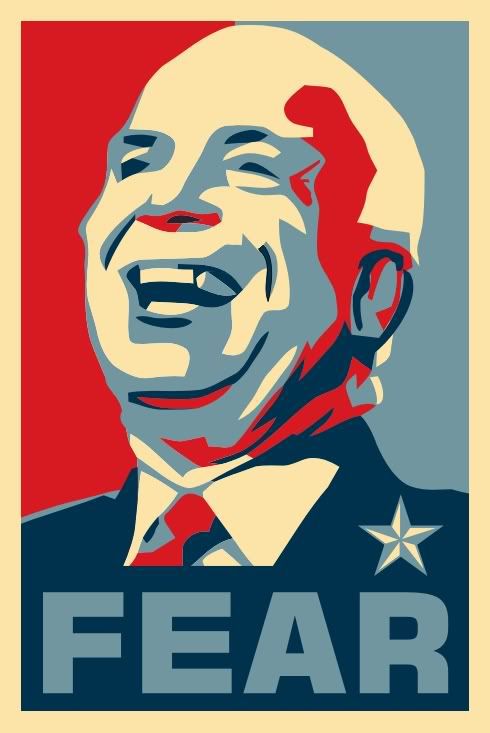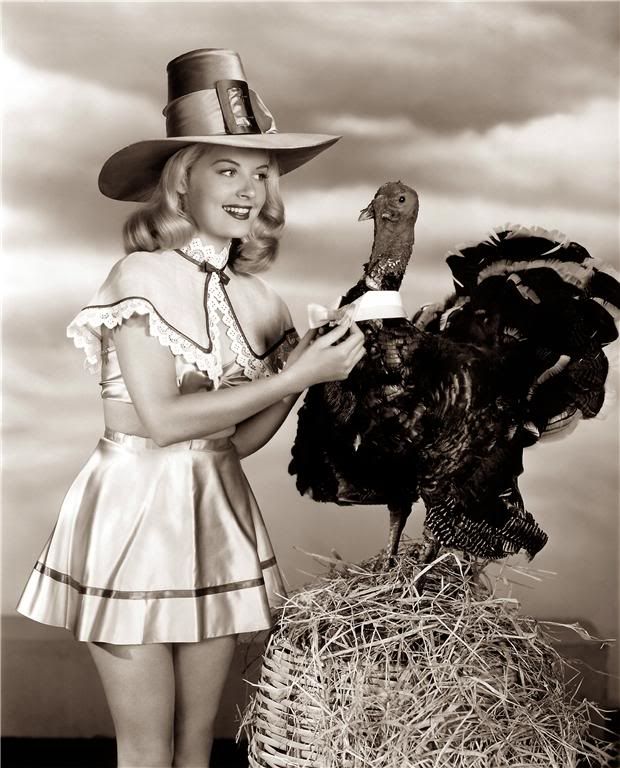
Thursday, November 27, 2008
Tuesday, November 25, 2008
John Forté freed
John Forté, a Haitian rapper from Brooklyn who wound up going to Exeter Academy and hanging out with Carly Simon and the Fugees, was pardoned yesterday by President Bush. He’d been in jail for seven years on a drug trafficking charge that he had long disputed.
Here’s the piece I wrote on him in the Boston Globe six years ago, which is trapped behind their paid-archive firewall. I wrote it as a tryout for a job I didn’t get.
FACING JAIL TIME, FORTÉ FINDS THE MUSIC WITHIN
RAPPER’S ARREST STIRS AN EMOTIONAL RELEASE
BYLINE: By Ben Sisario, Globe Correspondent
At a time when rap is becoming increasingly one-dimensional, John Forté is a fascinating study in contrasts. He is the Haitian boy from the streets of Brooklyn who won a scholarship to Phillips Exeter Academy in New Hampshire and ran with the Martha’s Vineyard set. He studied classical violin, but dropped out of college to pursue a career in hip-hop. He is the bleary-eyed player in dreadlocks who wears a knit sweater, silk tie, and crisp white shirt.
“Balance is a way of life,” he rapped on his debut album, 1998’s “Poly Sci.” “Right, Left / North, South / Two sides balance out/ Black, White / Either or.”Now there’s a new kink in Forté’s double life. In November, he was sentenced by a federal judge in Houston to 14 years in prison for drug trafficking. Forté was arrested at Newark International Airport in New Jersey in July 2000 on charges of accepting more than $1.5 million worth of liquid cocaine, and he is currently preparing an appeal while serving out his sentence in a Texas prison.
Meanwhile, his second album, “I, John” (Transparent), recorded while he awaited trial last year, will be released Tuesday. Far from rap’s usual jailhouse boasts, it is one of the most complex, introspective hip-hop albums to come out in years, with an emotional depth and musical vision that rivals the work of Wyclef Jean and Lauryn Hill, his mentors in the Fugees.
“While I awaited trial, emotions ran through me like never before, and they weren’t all bad,” Forté says from prison, where he can communicate with journalists only by written interview. “There was a realization that took place, and for perhaps the first time in my life I was able to see what was important. Love was at the top of a very short list.”
Forté has his defenders, among them Carly Simon, who has forged a special bond with the 27-year-old rapper. Forté met her through her son Ben Taylor, when he visited the family on Martha’s Vineyard one summer a few years back; he spent six weeks there.
“We have a really close relationship,” says the woman Forté calls “Mama C.” “It’s like this happened to my child,” Simon says, adding that Forté has sent her some 60 long letters from prison.
When Forté was arrested, his one phone call was to Simon, who rushed to pay his $250,000 bail.
He is not the first hip-hop artist to go to jail, of course, nor is he the first to record an album while awaiting incarceration. Two members of the Wu-Tang Clan, Ol’ Dirty Bastard and Ghostface Killah, for example, have had repeated run-ins with the law, complicating the release of solo and group albums.
Forté is no thug. He was raised by his mother in Brownsville, a tough section of Brooklyn, but won a full scholarship to Exeter. He enrolled in the fall of 1989 and soon was rapping about Dostoyevsky. He dropped out of New York University after just a semester to devote himself to hip-hop.
After meeting a girl named Lauryn Hill, he joined the Fugees’ extended family, the Refugee Camp, and worked on the group’s 1996 smash, “The Score,” as a producer, writer and performer.
Wyclef Jean of the Fugees took Forté under his wing, giving him guest spots on his solo album “The Carnival” and coproducing Forté’s own solo album.
Like the Fugees albums, Forté’s “Poly Sci” has melodramatic, vaguely spiritual lyrics and slow, luxurious tunes that borrow from reggae and drippy R&B. It was not an original approach, and in a marketplace flooded with Fugees copycats, it sold less than 100,000 copies, a respectable number for an underground rapper, but a failure compared to the 6 million sold by “The Score.” His label, Columbia, dropped him, and he began DJ’ing in Manhattan, trying to regroup and redevelop his skills.
According to the prosecution’s case, this is when Forté made his connection to the underworld. He is accused of procuring young female couriers to pick up packages of drugs coming in from Mexico and Central America as part of an elaborate smuggling ring.
When Forté was arrested, prosecutors charge, two women handed him packages containing about 14 kilograms of liquid cocaine. The women had been caught before they boarded their plane in Houston, and the meeting with Forté was a setup.
In taped phone calls with the women before they left, prosecutors said, Forté gave them instructions on how to care for the cargo, telling them, “put the ice cream on ice.”
But throughout the ordeal Forté has maintained his innocence. “I dispute the charges wholeheartedly,” he says.
Forté says that he knew nothing of cocaine and that he thought he was only receiving cash to deliver to a third party who Forté’s lawyers say was a known and trusted business associate.
During his trial Forté was offered a generous plea bargain deal by prosecutors but rejected it because he was certain he could win in trial. Forté was charged with several crimes but in the end the jury rejected a conspiracy charge and only convicted him of the relatively minor charge of possession with intent to distribute. His sentence was so great only because of mandatory minimum sentencing laws.
Simon insists that Forté is innocent. “John has been victimized,” she says, “It’s a Sacco and Vanzetti case. It’s being tied to other things, not for the crime they think he’s committed.” She said Forté’s case has alerted her to the injustices of mandatory minimum sentencing for drug offenses, and she says his fame can help raise awareness for the cause. “It’s good that John’s case might be one to be focused on,” she says. “It might make people aware of what’s going on.”
The experience has had a humbling effect on Forté and has inspired him to do his best work so far. “I, John” has a depth and maturity not found on “Poly Sci.” It begins with “What a Difference,” which samples Dinah Washington’s “What a Difference a Day Makes” and finds Forté rejecting the macho hip-hop code for a simpler life.
“I’ve evolved to better things,” he sings, rather than raps. “I want homes instead of rings.” Elsewhere he says, “I’m disgusted with rap.”
Indeed, Forté raps very little on “I, John.” The album is mostly sung, in a cool, thin tenor that makes its first appearance here. He says it was Simon who encouraged him to sing. “She pushed me to take things up a notch, and, oh, yeah, sing them myself,” he says.
Simon seems to have learned something from the collaboration, too. She contributes an angry rap to the song “Been There Done That,” saying, “Do not underestimate me / People have before and ended up looking so silly!”
The album is structured as a series of reflections on Forté’s life and on what he calls his “trouble,” imagining the ramifications of one fateful day. He imagines loved ones left behind, lost pleasures and happy times in the past. Some rage comes through in “Been There” and “Trouble Again,” in which he complains about media coverage: “Heard the words in the paper / Now what will they think up?” He makes peace with a parent he has never known on “Dearest Father” and prays for freedom on “Reunion.”
There are few overt references to his incarceration; instead, he uses the situation as an opportunity to reflect on his life. His producer, Joel Kipnis (who is known as J.K.), sees the album as an exploration of universal themes. “It holds true to everybody’s life,” Kipnis says. “There’s one moment, one day, one minute, when everything changes. As a storyteller, John takes the event and describes the different roads it leads him to, directly or indirectly.”
Forté is rightly proud of the album, but is careful to hang on to his newfound humility. “Would this record be as strong, had I not gone through this? I have no idea,” he says. “The only thing I know is that everything happens for a reason.”
1 comments
Labels:
interviews,
john forté,
library science,
me,
news
![]()
Press release of the day: Velvet Revolver, label ‘end partnership’
Dubious euphemisms dept.:
I’ve long been a fan of the press releases from Velvet Revolver, and in particular WEILAND, their former lead singer. The KGB did not document events as well, nor as misleadingly. Here’s the latest, saying that they got dropped by their label without saying that they got dropped by their label:
VELVET REVOLVER AND RCA END THEIR PARTNERSHIP
Finding the new lead singer for VELVET REVOLVER is a formidable task... So in June 2008, SLASH, DUFF MCKAGAN, MATT SORUM and DAVE KUSHNER approached RCA Records and asked to be released from their recording contract, as they felt they needed to have complete freedom to go through whatever process it would take to accomplish the goal…freedom from any timelines, pressures, influences or interests other than finding THE best guy. RCA Records honored the band’s request.
Carl Stubner, the band’s manager, says: “...The band is thankful that RCA understood the task at hand and has allowed the band to continue on their own.” Stubner added: “This band is comprised of some of the greatest rock musicians of the past three decades. They have built a brand with a solid foundation on a global level. And their sole focus has been, and continues to be, finding the singer/songwriter who will stand alongside them.”
Because the last thing you want when recruiting a new singer is a legitimate record contract to show that the band has a future.
Monday, November 24, 2008
Thursday, November 20, 2008
Wednesday, November 19, 2008
Press release of the day: John Lennon = Faust, Robert Johnson, ‘others’
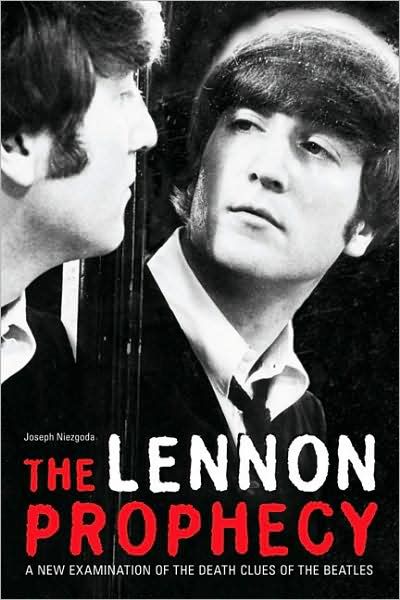
I’m not enough of a Beatles freak to know or care if there’s much of a “turn me on, dead man”-type precedent for this, but thank God somebody has decided to be the Ralph Macchio here and tackle head-on the urgent question of whether John Lennon sold his soul to the devil “in exchange for his worldly musical success with the Beatles and beyond.” And beyond!
The basis for this conclusion? On Dec. 27, 1960, “when Beatlemania first struck audiences,” the Beatles played a concert that “evoked a response noticeably different from anything in their past,” and thus they “inexplicably and immediately” became superfamous. So John must have struck a deal with Old Scratch. QED, right?
WASHINGTON, D.C., November 18, 2008 - Did John Lennon sell his soul to the devil in exchange for his worldly musical success with The Beatles and beyond? That’s the theory set forth by Joseph Niezgoda in his soon-to-be released book The Lennon Prophecy, A New Examination of the Death Clues of the Beatles.
The Lennon Prophecy offers a new interpretation of the hidden messages and symbols that have ornamented Beatles mythology for years and offers the view that Lennon joined historical figures such as Mississippi “Crossroads” blues guitarist Robert Johnson, Dr. Johann Faust, Pope Sylvester II among others who entered into a pact with the devil to exchange their souls for earthly successes....
Niezgoda alleges that a 20-year pact began in December of 1960, shortly before a night when Beatlemania first struck audiences on December 27, 1960, when the Fab Four played at Town Hall Ballroom in Litherland, England. During that performance, as Niezgoda writes, “The Beatles evoked a response noticeably different from anything in their past.” From there, The Beatles inexplicably and immediately shot to global fame at a level never seen before or since. The 20-year pact came to its tragic conclusion on December 8, 1980, when Mark David Chapman, who testified he was possessed by demons, fulfilled the end of the contract by murdering Lennon outside of his apartment at The Dakota in New York City.
I appreciate the reference to Sylvester II. You can’t count on good medieval papal scholarship anymore.
5
comments
Labels:
beatles,
press release of the day
![]()
Tuesday, November 18, 2008
Museum of propaganda: Conservation
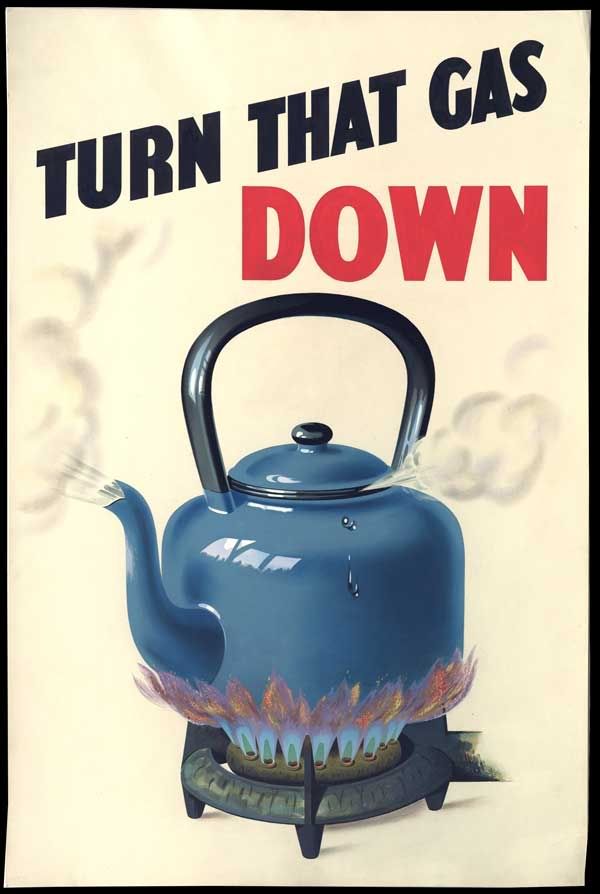
Ministry of Fuel and Power (U.K.), late 1944.
0
comments
Labels:
posters,
propaganda,
UK
![]()
Monday, November 17, 2008
Jim James, music critic
Rolling Stone has put up a bunch of ballots from their not very persuasive recent list of the “greatest singers of all time.” They're fun to look through. Hetfield’s feels right, with Ronnie James Dio as his fave and high marks for Lemmy Kilmeister and Sean Harris of Diamondhead; Beatles-worshipper Ozzy Osborne puts John at No. 1 and Paul at No. 2.
But the best I see is from Jim James of My Morning Jacket, who seems to have actually taken seriously the task of ranking history’s greatest singers. He puts “Marvin Pentz Gaye Jr.” in the top slot and includes Jimmie Rodgers, Louis Armstrong, Bon Scott, Wayne Coyne, Nina Simone and Gram Parsons. That’s a fine, honest, learned list, and it’s what I wish the final product was more like.
Interesting thing: a bunch of people on these ballots chose Bon Scott, who didn't make it to the Top 100. Wonder where he placed?
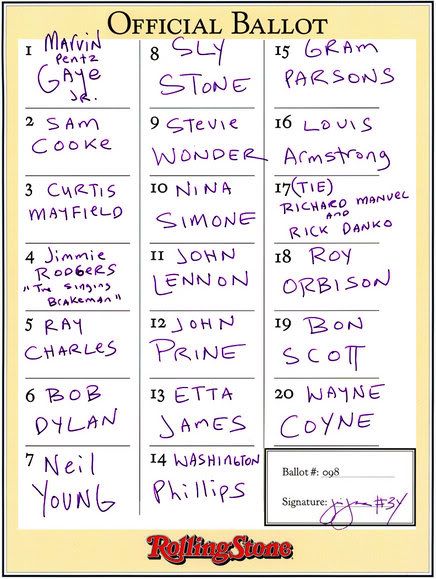
0
comments
Labels:
best of,
lists,
my morning jacket,
rolling stone,
we media whores,
worst of
![]()
Friday, November 14, 2008
A bunch of new Watchmen videos
The big news is the new trailer. It just went up on Yahoo, which declares it “totally awesome.” Jake and Jesse have already pooh-poohed it, but I like it better than the previous one — more Cold War tension.
I also missed the last couple of entries in the ongoing video journal on the Watchmen movie blog. No. 8, directly below, is about Silk Spectre, and No. 7 features Dr. Manhattan. Aside from my other nits, the thing that worries me most here is all the Matrix-style slow-motion fight shots. So 2001.
1 comments
Labels:
cautious expectation,
video,
watchmen
![]()
Thursday, November 13, 2008
40 singers inexplicably omitted from Rolling Stone’s 100 ‘greatest of all time’
Rolling Stone has just published their list of the “100 greatest singers of all time,” but like most of the magazine’s rankings, it basically covers 1955 to 1975, with some token others. You have to go to No. 30 (Prince) before you hit a singer whose career began after the Nixon administration, and No. 45 (Kurt Cobain) No. 39 (Jeff Buckley) for somebody post-Reagan. Rolling Stone gives every birthdate, and if I had time I would calculate the average age. Anyone?
But the omissions truly surprised me. Even restricting this “all time” list to the 20th century (surely Farinelli, the great castrato celebrity of the 1700s — he once blew Handel off — was better than No. 99, right?), and to non-classical singers (Maria Callas vs. No. 69), the choices are bizarre. Here, off the top of my head, are 40 highly notable omissions; these are always judgment calls, of course, but I’d argue that at least the top 10 are absolute essentials.

- Frank Sinatra
- Nat King Cole
- Billie Holiday
- Ella Fitzgerald
- Bing Crosby
- Mahalia Jackson
- Leadbelly
- Bessie Smith
- Miriam Makeba
- João Gilberto
- Dionne Warwick
- Sandy Denny
- Natalie Merchant
- Linda Thompson
- Blind Willie Johnson
- Marion Williams
- Nancy Wilson (jazz)
- Harry Belafonte
- Jimmie Rogers
- Carly Simon
- Joan Baez
- Barry Gibb
- Caetano Veloso
- Cab Calloway
- Blind Lemon Jefferson
- Ron Isley
- Salif Keita
- Sade
- Louis Armstrong
- Ian Curtis
- Sarah Vaughan
- Asha Bhosle
- Louis Jordan
- Serge Gainsbourg
- Amália Rodrigues
- Robert Johnson
- Woody Guthrie
- Youssou N’Dour
- Bobby McFerrin
- Baaba Maal
And that’s without Latin music (Hector Lavoe? Vicente Fernandez?) or almost anything Asian, which are not my specialties. Just for good measure, here are 10 more that I wouldn’t call essentials, but one could argue have major significance:
- Marianne Faithfull
- Carmen Miranda
- Gilberto Gil
- Beth Orton
- Pete Seeger
- Sting
- Daryl Hall
- Arthur Lee
- Barry White
- Madonna
12
comments
Labels:
best of,
lists,
rolling stone,
we media whores,
worst of
![]()
Sad milestone: Jimi Hendrix Experience, RIP
I’m saddened and honored that I’ve now buried two-thirds of the Jimi Hendrix Experience — who, with the passing of drummer Mitch Mitchell on Wednesday, are now extinct. (That’s my unbylined Noel Redding obit from 2003.) |  |
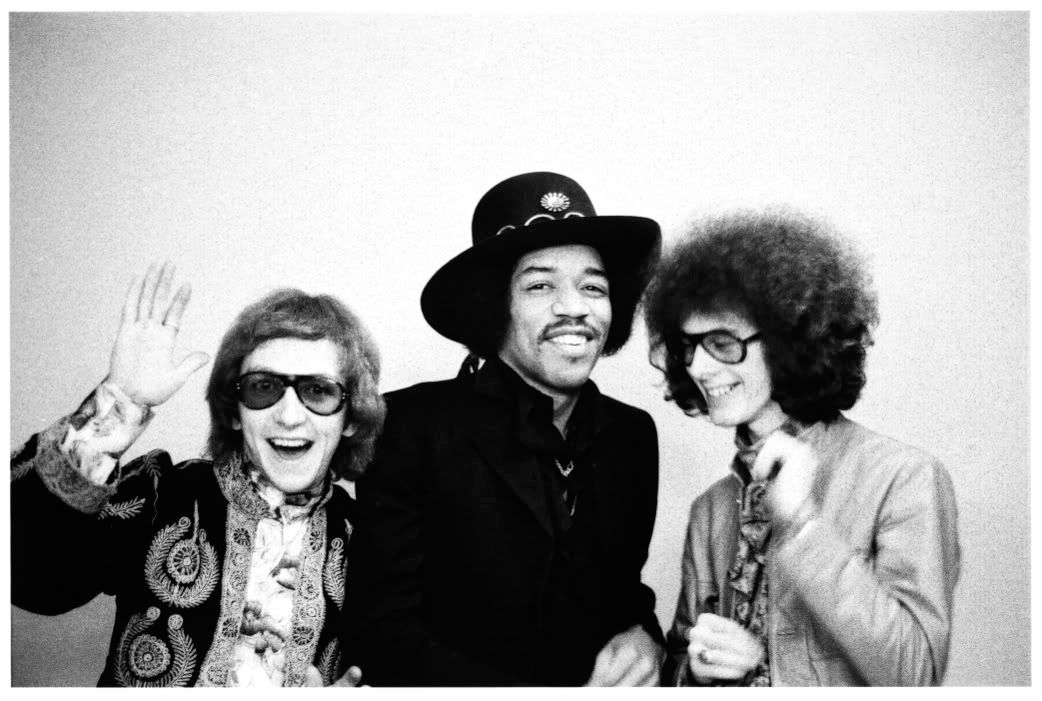
1 comments
Labels:
hendrix,
me,
news,
obits
![]()
Wednesday, November 12, 2008
New Jim White song, interview
Tooting own horn dept.: For the latest Popcast, the Times’ weekly music podcast, Jim White dropped by our “studio” (converted, unsoundproofed office). When I met him in the lobby he was wearing a utilitarian green polyester jacket and an even more utilitarian white cap, like the one below (which he apparently signed for a fan). He carried a nice-looking guitar that he had gotten for a song at a Georgia flea market — a sure sign of recession, he said.
For the latest Popcast, the Times’ weekly music podcast, Jim White dropped by our “studio” (converted, unsoundproofed office). When I met him in the lobby he was wearing a utilitarian green polyester jacket and an even more utilitarian white cap, like the one below (which he apparently signed for a fan). He carried a nice-looking guitar that he had gotten for a song at a Georgia flea market — a sure sign of recession, he said.
White is a natural raconteur. And although he’s often pegged as simplistic “Southern gothic” (I’m guilty of using that critical crutch), he embraces his Southernness and can articulate that muse in fascinating detail, as he did in the documentary Searching for the Wrong-Eyed Jesus.
We talked about his time as a New York cab driver, his formative meeting with Tom Waits, and how he is struggling to write happier songs. (“I’ve got a lot of happy little tugboats turning the sad ship in the direction of the port of contentment,” he said.) He also played a brand-new piece, “The Runaway Song,” and talked about the teenage relationship that inspired it.
It’s a beautiful song, and I enjoyed my conversation with White, as I have recent interviews with Charles Hamilton, Jay Reatard, Julie Fowlis and Cory Chisel. But White’s best comment was edited out. He hit bottom in his Travis Bickle days when he spat on an 80-year-old woman: she was wasted and barfed in his cab, so he gave her what-for. “That’s when I realized something was missing in my life,” he said.
Listen to the full Popcast, which includes reviews of David Archuleta and Deborah Cox, here.

0
comments
Labels:
audio,
interviews,
jim white,
me
![]()
Tuesday, November 11, 2008
Monday, November 10, 2008
New ‘Watchmen’ posters
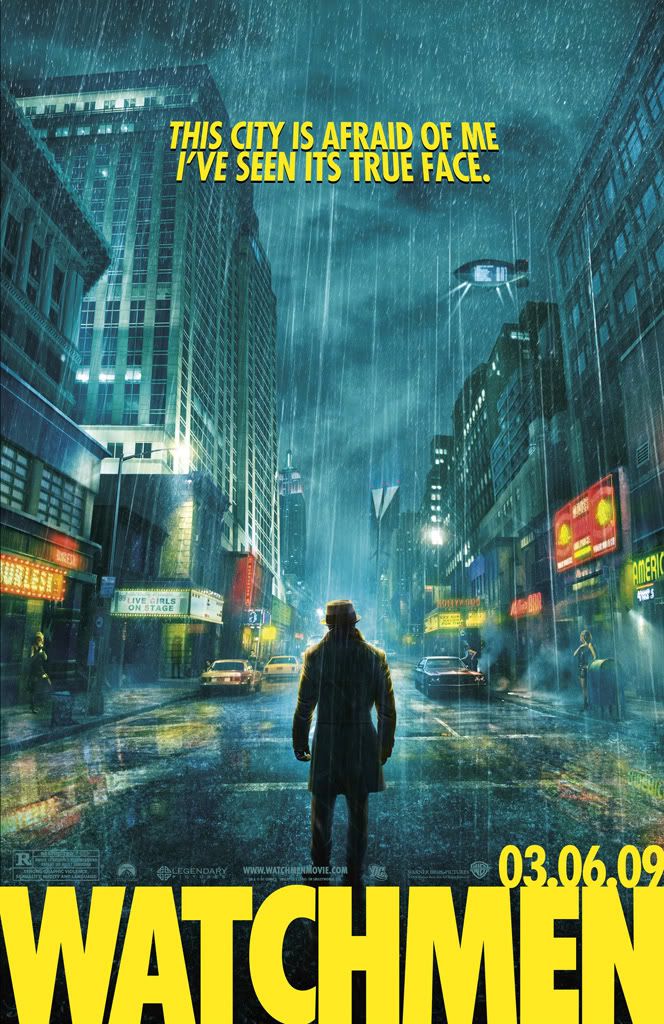
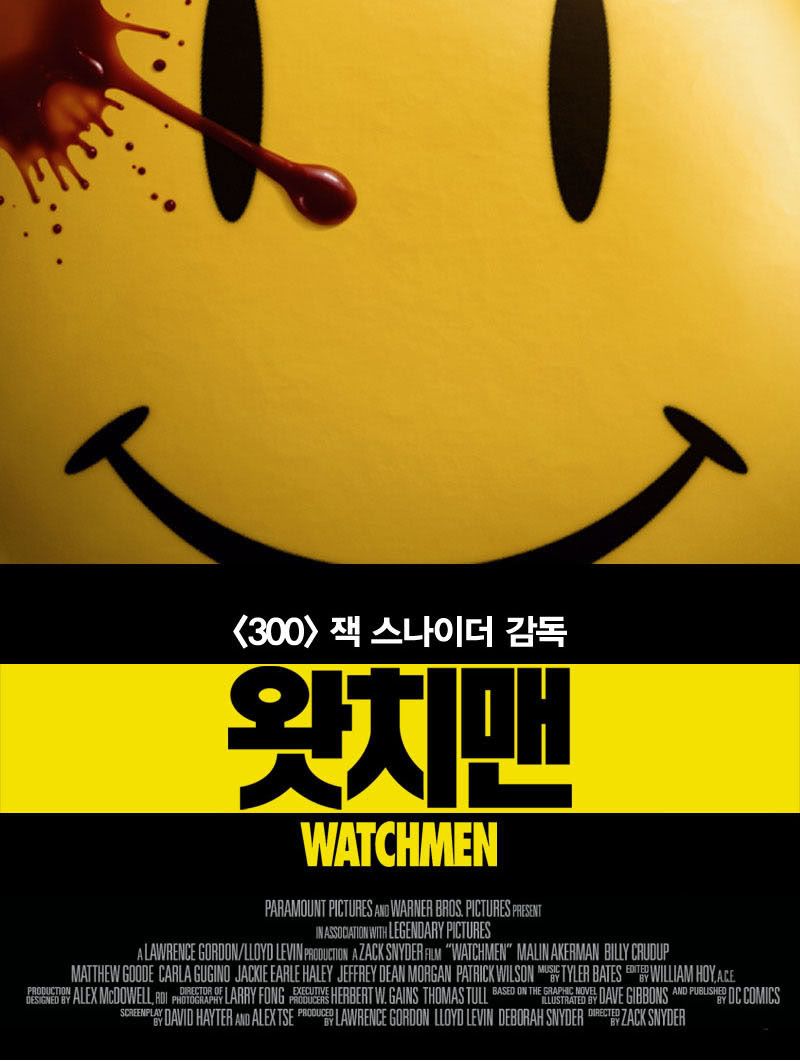
Weird thing about the top one: the cars are going the wrong way. Was it designed by a Brit? Maybe even Dave Gibbons?
0
comments
Labels:
posters,
south korea,
watchmen
![]()
Sunday, November 9, 2008
Saturday, November 8, 2008
Voice from beyond: Jimmy Carl Black

Eerie coincidences dept.:
A couple of days ago I wrote an obituary for Jimmy Carl Black, the original drummer of the Mothers of Invention. He’s the one front and center in a beard and white dress on the cover of We’re Only In It for the Money, on which he famously introduced himself by saying, “Hi, boys and girls, I’m Jimmy Carl Black — I’m the Indian of the group.” Like the rest of the band, he was canned by Zappa in 1969.
Today in the mail I got a two-CD set by Jon Larsen, a jazz guitarist from Norway, called The Jimmy Carl Black Story. In his later years Black lived in Europe and played there with various people, including Eugene Chadbourne. Larsen’s album is a self-described “surrealistic space odyssey” that includes a fair amount of jimmycarlsploitation, like the second track, which is called, ahem, “Hi Boys and Girls, I’m Jimmy Carl Black.”
(According to the accompanying press release from Hot Club Records, the album is being released in the U.S. on Nov. 25, though it looks like as if you can get it now through eMusic.)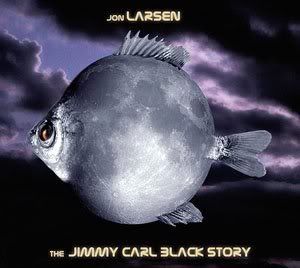 But truly creepy is the last number, “Jimmy-As-A-Ghost,” an interstellar love story in which Black, whose vocals were apparently recorded by phone, narrates as a space-age Casper who had a fatal dalliance with “a very, very funky Mrs. Martian.”
But truly creepy is the last number, “Jimmy-As-A-Ghost,” an interstellar love story in which Black, whose vocals were apparently recorded by phone, narrates as a space-age Casper who had a fatal dalliance with “a very, very funky Mrs. Martian.”
But people, don’t despair, I’m back as crew-on-post.
Hi boys and girls,
Now I’m actually ... Jimmy-As-A-Ghost!
Disc 2 of the set is a spoken interview with Black, who goes into a good bit of detail about his early days and the juicy misadventures of a Rosencrantz Guildenstern in the glory days of 1960s rock. Track 11, for example, is called “Miami Pop Festival/Freak out at the Cast Away Hotel/Arthur Brown/Jimi Hendrix/A helping hand from unca Mickey.”
Here’s Track 1, whose title you could probably guess: “My name is Jimmy Carl Black.”
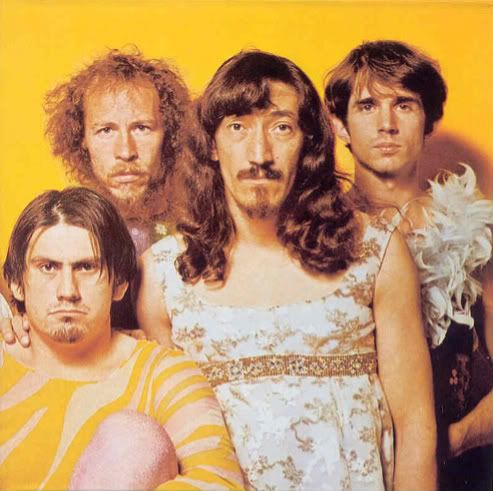
1 comments
Labels:
audio,
jimmy carl black,
news,
obits
![]()
Friday, November 7, 2008
Thursday, November 6, 2008
ObamaBats
Somebody writes:
I’m proud to announce and share the ObamaBats: A collection of 24 high-quality dingbats featuring Barack Obama and various design elements! This collection is completely free for download, upload, distribution, use and modification. Use these dingbats to start creating your own Obama paraphernalia today! (Link.)
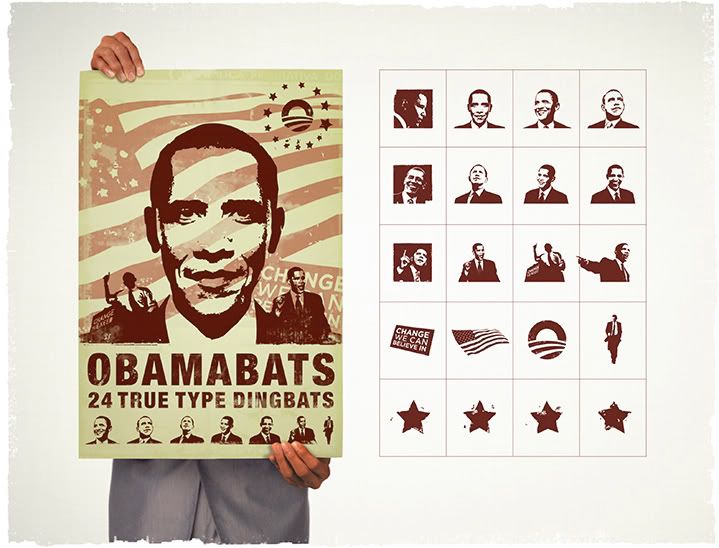
Wednesday, November 5, 2008
Not to the promised land just yet
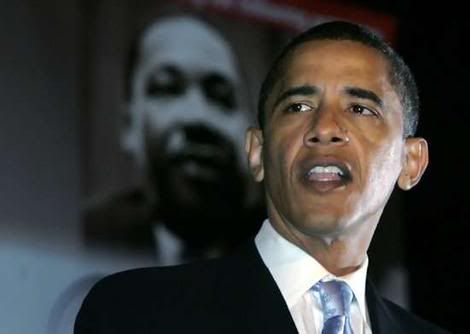
I just heard someone on Brian Lehrer’s show on WNYC refer to Barack Obama as “colored.” Uncharacteristically, Lehrer didn’t say anything about it.
0
comments
Labels:
li’l nuggets o’ hate,
obama,
politics,
propaganda
![]()
Tuesday, November 4, 2008
OED word of the day: chad
chad, n. 2 ADDITIONS SERIES 1993 Telegr. and Computing.
(A piece of) the waste material removed from punched cards or tape during punching.
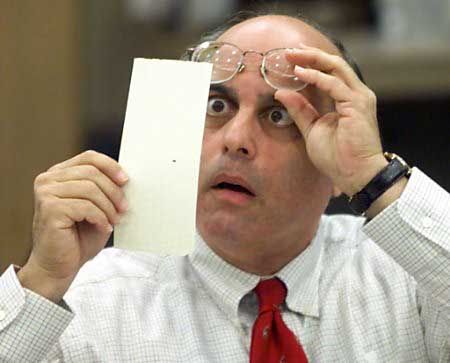
1959 J. W. FREEBODY Telegr. xi. 460/2 The small hinged discs of paper, called ‘chads’, remain attached to the body of the tape. 1968 J. BLACKBURN Nothing but Night vii. 64 The machines ... spewed out the sixty-four-row punch cards ... At the base of each machine was a vacuum tube to remove the dust and the chads. 1982 Computerworld 9 Aug. 59 The reader head is mounted on the front of the unit next to the chad box.
Hence chadless a., not producing or accompanied by chads.
1959 J. W. FREEBODY Telegr. xi. 460/2 In order ... that the printed characters are completely legible, the tape is perforated by the chadless method. 1971 Gloss. Electrotechnical, Power Terms (B.S.I.) III.iii.19 Chadless perforation. 1984 U.S. Patent 4,425,394 1 Each tag has a chadless hole provided by a pattern of knife cuts.
Copyright © Oxford University Press 2008
0
comments
Labels:
OED,
politics
![]()
Monday, November 3, 2008
Exposed! The real Frank Black
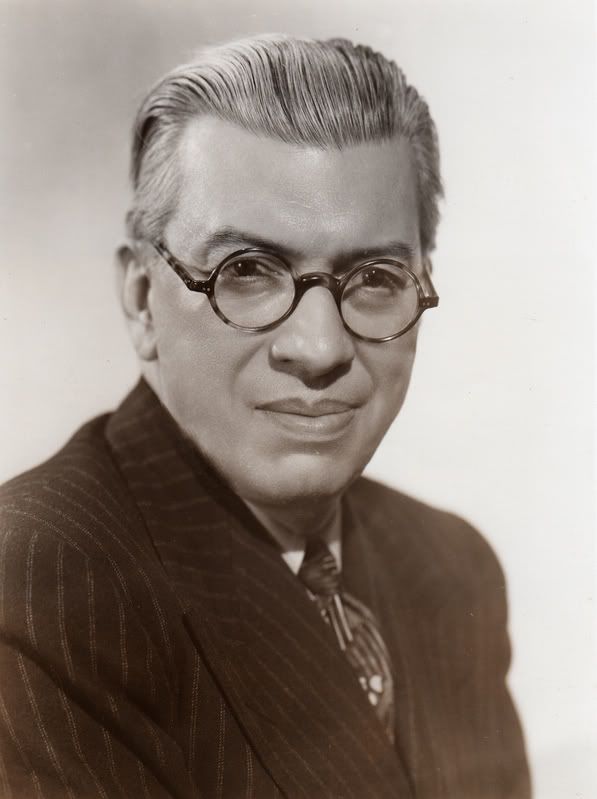
A wide-ranging and extremely well funded investigation by this blog has uncovered the astounding story behind one of the most beloved names in American entertainment.
Many know and admire Frank Black as the leader of the Pixies and the singer of favorites like “Kicked in the Taco.” But according to documents unearthed at a flea market in Manhattan and corroborated by extensive research, the name had a prominent association long before it became the favored pseudonym of Charles Michael Kittredge Thompson IV.
In other words, there was a Frank Black who was Frank Black before Frank Black became Frank Black (after first being known as Black Francis)!
Decades before “you fuckin’ die,” back in the 1930s and ’40s, another Frank Black was known to radio listeners as the music director of the esteemed NBC Symphony Orchestra. Conducting classical music and lite fare, he was heard by millions each week. And in that emergent middlebrow era, when most high-culture posts in this country were filled by Europeans, the Philly-bred Black, with his slicked-back hair and tortoise-shell glasses, was an approachable, relatable American, not unlike Bernstein or Copland.
Dude had connections. Toscanini and Stokowski frequently borrowed the NBC orchestra, and when President Truman’s daughter, Margaret, attempted a singing career, Black conducted her Carnegie Hall debut on Dec. 20, 1949; her program included Christmas tunes and an aria from Puccini’s Gianni Schicchi. (Miss Truman’s parents were not in the audience, though Eleanor Roosevelt was.)
Charles Thompson, the Frank Black you saw on the Pixies reunion tour, did not respond to a request for comment.
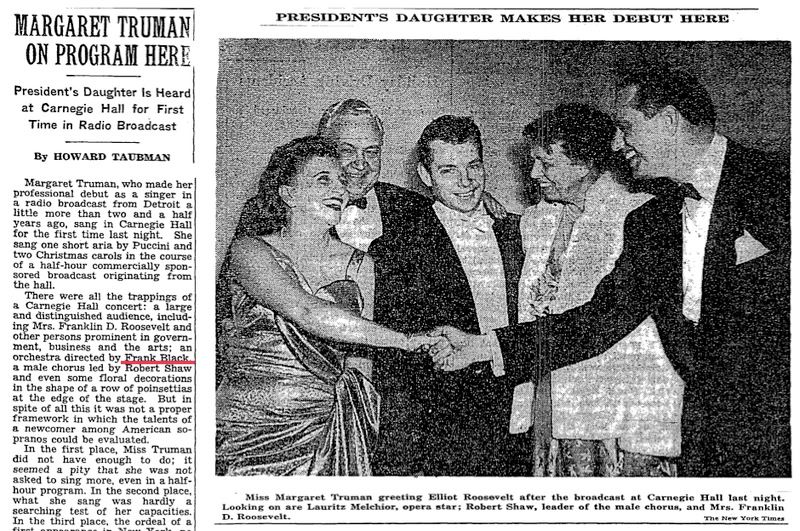
Don’t Ya Rile ’Em!
This Frank Black — Frank Jeremiah Black — was born in Philadelphia on Nov. 28, 1894, to a prosperous Quaker dairyman. Dad “had every hope that his son would take over his work,” wrote David Ewen in his 1943 book Dictators of the Baton, “but Frank Black had a mind of his own.”
He enrolled at nearby Haverford College as a chemistry student, but soon found his way to music. Beginning a career that would straddle classical and pop tastes, Black studied in New York with Rafael Joseffy, a renowned Hungarian pianist and composer, but he paid the bills writing for vaudeville and doing other musical odd jobs, which vary according to biographer. Was he running his own player piano roll company or his own record company? Editing a magazine or editing scores for a Philadelphia music publisher?
Anyway, it was journeyman work until he made his way to Tin Pan Alley and Broadway at age 21. He arranged and directed musicals for the likes of Gershwin, Ziegfeld, Kern, and Rodgers & Hart, and by 1926 he had joined the Revelers, a popular vocal quartet, as pianist and arranger. Black’s arranging skillz in hits like “Ol’ Man River” and “Yankee Rose” helped the Revelers become the most imitated close-harmony group of their time.
He also quickly stepped out as a bandleader. Frank Black and His Orchestra were scoring hits on the Brunswick label as early as 1927, with “The Best Things in Life Are Free” and “The Varsity Drag,” the pre-Jitterbug collegiate dance number from the musical Good News:
You can pass many a class,
Whether you’re dumb or wise,
If you’ll all answer the call when your professor cries:
“Everybody down on the heels, up on the toes,
Stay after school and learn how it goes.
Everybody do the varsity drag!”
Go Frank Black go!
No Time for the Man Called Czar!
The success of the Revelers was Black’s ticket into the radio biz. At some point, according to Ewen, he was approached by NBC executives asking “if he would consider a radio post.”

Black, thinking of the deplorable lack of good music over the air, said he would; but his ambition in this direction was to organize a string symphony orchestra, and to conduct it as a regular radio feature in the best music of all time.
They went for it. And while it’s not clear whether “the best music of all time” was to include opening sets by Jonny Polonsky and Reid Paley, Philly Frank had scored big. In 1928 he became NBC’s music director, and thus a prominent figure in American cultural life. He churned out show after orchestral show throughout the 1930s and ’40s for a blur of sponsors: “The Magic Key Hour,” “Carnation Contented Hour,” “General Motors Symphony of the Air,” “The Bell Hour” and “Harvest of Stars” (sponsored by International Harvester), for which the publicity photos at the top and bottom of this post were taken circa 1947.
These were the early days of light classical music, the stuff we now know as pops. There was a demand for original, recyclable background music — for radio dramas, commercials, newsreels and all kinds of broadcast filler — and Black was one of the guys who supplied it, in quantity. (In England at this time, Robert Farnon was the master of light music, writing scads of pieces with titles like “Jumping Bean” and “Peanut Polka” as well as plenty of canned “production music.”) Black had a diversity of taste unusual for the era. “Amazes Musicians by Switching From Jazz to Classics,” read one newspaper headline from 1937.
It was hard work. Reading scores, doing auditions, writing arrangements, supervising the purchase of instruments, tracking down Kim Deal conducting concert after concert. “It has been some years since Black has enjoyed a vacation from his many arduous and taxing assignments,” Ewen wrote. “A day of work does not end for Black until nine in the evening; but frequently Black is still hard at work at his office till well past midnight.” In 1936 and 1937, for instance, Black was doing “Magic Key” in Manhattan on Sundays and the Carnation milk program in Chicago on Mondays, and commuted back and forth by air for 58 weeks. Back then, remember, stewardesses doubled as nurses and planes looked like toy models (left).
In 1936 and 1937, for instance, Black was doing “Magic Key” in Manhattan on Sundays and the Carnation milk program in Chicago on Mondays, and commuted back and forth by air for 58 weeks. Back then, remember, stewardesses doubled as nurses and planes looked like toy models (left).
In a 1939 profile, Time magazine described Black’s flight hazards:
He was gashed and kayoed when bumpy air over the troublesome Nittany Mountains conked him against an overhead baggage rack. He once watched ambulances gather below him at Newark when his ship could not get its landing gear down. He weathered innumerable forced landings and is one of the few air travelers who ever landed on an airport backwards... Frank Black, who finds the lofty detachment of air travel just the ticket for writing arrangements, still likes to fly.
Even in the hospital, the guy worked like a dog. An NBC press release dated Halloween 1938 reported that Black “has been living in the Leroy Sanitarium in New York City for ten days and expects to stay another ten.” But instead of resting, he was “doing musical research and writing arrangements for the series of Great Plays heard over the NBC-Blue Network from 1:00 to 2:00 p.m. on Sundays.”
“It’s a great place to write,” Black said. “At last I’ve found a quiet place to work and I’m really accomplishing a great deal.”
Hang On to Your Ego!
He worked hard for the money, and by gum he got it. According to Time in 1939, Black was raking in $100,000 a year for his weekly “Cities Service” and “Magic Key” concerts and summer gigs with the NBC String Symphony. (Average wage for a college grad was then around $2,000.) As if those responsibilities were not enough, he was also expected to “oversee NBC’s vast music library, and dash off arrangements — popular or highbrow — which are the envy of the profession.” It wasn’t all symphonic bubblegum. In 1942 he collaborated with Edna St. Vincent Millay on the music for her dramatic poem “The Murder of Lidice,” about the Nazi atrocity that year in Czechoslovakia. In a statement, he advocated political engagement in the arts:
It wasn’t all symphonic bubblegum. In 1942 he collaborated with Edna St. Vincent Millay on the music for her dramatic poem “The Murder of Lidice,” about the Nazi atrocity that year in Czechoslovakia. In a statement, he advocated political engagement in the arts:
Black agrees with Miss Millay that now is no time for artists to withdraw into artistic ivory towers far-removed from a war-torn world. “The times,” he says, “make almost every one writing good music to stop thinking about the techniques of their art in order to think more about its content.”
He got his kudos. In May 1935 he collected an honorary doctorate from Missouri Valley College (you can be sure that every press release and puff newspaper column that followed diligently called him “Dr. Black”), and five months later was made an officer of the French Academy, “in recognition of his services to French artists and for promoting a wider knowledge of French music in the United States via radio.”
The honor was given in New York by Isidor Philipp, a well known French pianist and teacher. “The decoration which accompanied Dr. Black’s commission,” NBC announced, “consists of crossed silver palm leaves set in rubies.”
He published articles on American composers and cultivated eccentric theories. NBC sent out a flurry of releases in early 1934 about his idea for a “standing orchestra.” Black wanted the musicians “vertical” during the broadcast, believing that they “are at their best when standing as they fiddle and toot.” His quote:
“No violinist would think of sitting during a concert performance. What does he do? Why, he always stands! So, that’s what I intend to ask my musicians to do during this hour program.”
Frank Jeremiah had one major hobby: collecting rare musical scores. Over the years he amassed a big trove, and reading between the lines of NBC statements and contemporary accounts, one gets the sense that these delicacies might have functioned as a kind of tribute to the grand man, or even quid pro quo. Consider this anecdote in a slice-of-life release from NBC in 1938 about visitors to Black’s office at Radio City, where the good Doctor received solicitations for new music:
Not long ago a total stranger was admitted to Dr. Black’s office. He had with him an item he wanted to sell Dr. Black for his collection. The musical director looked at it and was amazed. It was a first edition of a mass by Schumann, published posthumously.... The item stayed with Dr. Black for study and investigation, and in a very few days the man received a check.
The release goes on to say that Black’s library includes “a first printing of the Kreutzer Sonata, a first printing of the original scores of Wagner’s ‘Nibelungen Ring,’ the full scores of Gluck’s operas printed in 1774 from woodcuts, a Lutheran hymnal dated 1784, the first music ever printed, and a first edition of Liszt’s Hungarian Rhapsodies.” Hmm, how many of those priceless items arrived during office hours from “total strangers” who might or might not have also represented music publishers? Just wondering.
Bad, Wicked World!
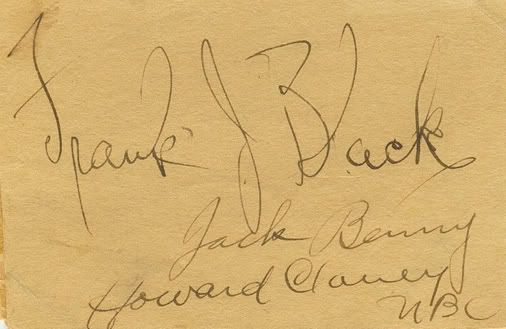
The trail starts to go cold in the mid-’50s. In his later years Black worked in light opera, Hollywood musicals and Broadway, but he disappears from the papers, which during the ’30s and ’40s had reported even his mundane real estate investments. Dr. Frank J. Black died in Atlanta on Jan. 29, 1968.
One positive light is that his collection of scores, which had grown considerably, found a home as part of a library at the Midland-Odessa Symphony in Texas. I have yet to find out much about this, but here is a paragraph that had been on Midland-Odessa’s website, now accessible only through cache:
[Robert G.] Mann was directly responsible for the 1968 acquisition of the Frank Black Music Library, one of the largest in the Southwest and remarkable in other respects.... The Black Library, occupying twenty-two steel cabinets and weighing five tons, has more than 3,000 pieces by 550 composers, including all of Beethoven’s symphonies and piano concertos as well as much of the standard repertoire. Some of the scores are original editions which are, for the most part, no longer obtainable. Many of the scores and parts have Toscanini’s notations for bowing and phrasing. The music of Rachmaninoff bears optional cuts in the composer’s own hand, and some of the Richard Strauss scores are enhanced by notes and comments by the composer.
Wondering why you’ve never heard of this Frank Black before? One clue can be found in NBC’s notes on that St. Vincent Millay project from 1942. Black clearly craved recognition, but he also seems to have enjoyed a certain amount of the behind-the-scenes invisibility that comes with radio. “If, after they’ve heard it,” Black said of the piece, “listeners say it’s a great poem, and if they don’t mention the music, I’ll know that I’ve done a good job.”

15
comments
Labels:
frank black,
from the dustbin,
pixies,
shocking exposé
![]()
Sunday, November 2, 2008
Press release of the day: Ramone family endorsements

OK, all you inexplicably still-undecided voters, you now have the final endorsements you need to make up your minds: Linda Cummings, widow of Johnny Ramone, has been hanging out with the McCains and getting props from the Senator’s 24-year-old blogger daughter Meghan, which has prompted the following release from Mikey Leigh, a.k.a. Mitchell Hyman, younger bro of Joey:
“It has been brought to my attention that Linda Cummings, using the name ‘Ramone,’ has recently been in the media joining with the Palin family and the McCains to attempt to aid their campaign for the Presidency. As a President of Ramones Productions, and brother of Joey Ramone, I just want it to be clear that Linda Cummings does not represent the political views of the Ramones. Surely, as for Joey Ramone, the only Ramones song he would sing at a Republican campaign event would be ‘Glad To See You Go!’
I should add that when Johnny stated ‘God Bless George Bush’ at the 2002 Rock&Roll Hall of Fame awards, I realize now that he was on to something. Because if it were not for George Bush and his handling of our country the past 8 years, I doubt so many Americans, including so many highly regarded Republicans, would now be getting behind Barack Obama. So, yes, God bless George Bush for paving the way to Obama.”
The Ramones’ political schism goes way back. Johnny was a staunch Republican, while Joey wrote “Bonzo Goes to Bitburg” in protest of Reagan’s 1985 visit to a German cemetery where 49 SS soldiers were buried. Johnny insisted that for U.S. releases the song be called “My Brain Is Hanging Upside Down.”
Johnny and Joey didn’t speak to each other for years. Those are committed voters.

